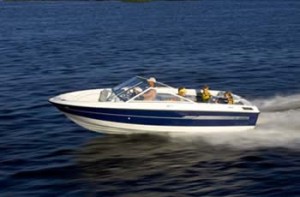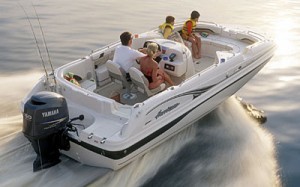Tips for Cleaning a Boat
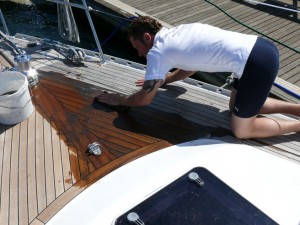
Here are some easy tips to consider when you’re cleaning your boat:
Wash frequently with a sponge or nonabrasive pad and plain water; this approach is very effective at removing salt. Additional “elbow-grease” is required to remove stains.
When using detergents, only use soaps that are phosphate-free, biodegradable and non-toxic. Any soap should be used sparingly, because even non-toxic products can be harmful to wildlife. For example, detergents will destroy the natural oils on fish gills, limiting their ability to breathe.
Wax your boat, if appropriate. A good coat of wax prevents surface dirt from becoming ingrained. Clean teak with a mild soap and abrasive pads or bronze wool. This method is safe for the environment and better for the boat than the solvents in standard teak cleaners which tend to eat away at the wood and to damage seam compounds.
Avoid detergents that contain ammonia, sodium hypochlorite, chlorinated solvents (bleach), petroleum distillates, and lye. Once you’ve thoroughly cleaned the outside of your craft, ensure that you have appropriate levels of outboard motor oil and other essential fluids.


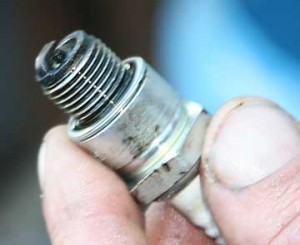 Now that we have done a thorough inspection of all of the fastenings on the lower unit, it is time to lubricate the grease fittings. The two primary parts to apply the grease to are the swivel bracket, which is the bearing the motor turns on, and the transom clamp screw. Once this is completed, work the throttle, forward-reverse shift lever and starter cord to identify the moving parts inside the power head; apply grease to all of these components.
Now that we have done a thorough inspection of all of the fastenings on the lower unit, it is time to lubricate the grease fittings. The two primary parts to apply the grease to are the swivel bracket, which is the bearing the motor turns on, and the transom clamp screw. Once this is completed, work the throttle, forward-reverse shift lever and starter cord to identify the moving parts inside the power head; apply grease to all of these components. Yesterday we went over the necessary parts and materials that you will need to tune your outboard motor. Before you begin dissembling your motor, refer to your owner’s manual for specific procedures and recommended parts or
Yesterday we went over the necessary parts and materials that you will need to tune your outboard motor. Before you begin dissembling your motor, refer to your owner’s manual for specific procedures and recommended parts or 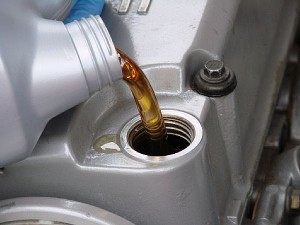 While the mass manufacturers of mineral oil tend to stifle this fact, the truth is that synthetic oil performs better than mineral oil in all circumstances. Whether it’s an automobile or
While the mass manufacturers of mineral oil tend to stifle this fact, the truth is that synthetic oil performs better than mineral oil in all circumstances. Whether it’s an automobile or 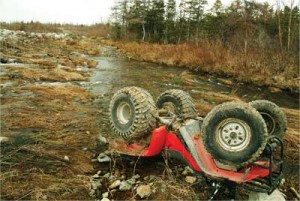
 While ATVs have become commonplace now, they have only been in the market for a relatively short amount of time. Introduced in the 1970s, all terrain vehicles (better known as ATVs) were at first met with a high incidence of injury. But this was largely attributed to improper use by the riders. To increase the level of safety, the norm was changed from three wheels to four wheels. Regardless of the number of wheels, an ATV can be described as any vehicle with low pressure tires, handlebars for steering, and a seat that must be straddled by the rider.
While ATVs have become commonplace now, they have only been in the market for a relatively short amount of time. Introduced in the 1970s, all terrain vehicles (better known as ATVs) were at first met with a high incidence of injury. But this was largely attributed to improper use by the riders. To increase the level of safety, the norm was changed from three wheels to four wheels. Regardless of the number of wheels, an ATV can be described as any vehicle with low pressure tires, handlebars for steering, and a seat that must be straddled by the rider.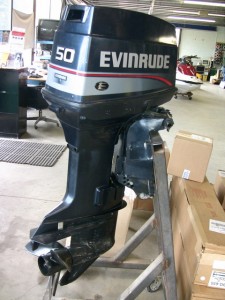 In a perfect world, we would all be able to afford precisely what our hearts desire. There wouldn’t be much diversity in the boating world, as we’d all be cruising past each other in top-of-the line boats with high-end outboard motors attached to the transom. Just think of all the luxury and convenience we would experience on a daily basis. Unfortunately, we would also miss out on many of the great stories that make boating so much fun. Old, well-worn boats have a certain character that their new counterparts lack. To an extent, the same could be said for outboards themselves.
In a perfect world, we would all be able to afford precisely what our hearts desire. There wouldn’t be much diversity in the boating world, as we’d all be cruising past each other in top-of-the line boats with high-end outboard motors attached to the transom. Just think of all the luxury and convenience we would experience on a daily basis. Unfortunately, we would also miss out on many of the great stories that make boating so much fun. Old, well-worn boats have a certain character that their new counterparts lack. To an extent, the same could be said for outboards themselves.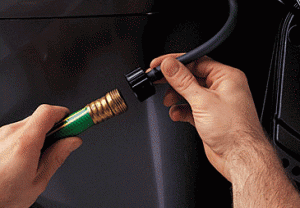 For most fishermen and fans of recreational water sports, a boat represents one of the most serious investments in one’s life. It generally comes down to a house, a car, and then a boat – in that order. So, assuming your boat is the third biggest financial investment in your life, doesn’t it deserve the sort of time and energy you put into your other prized possessions? After all, your home might be remodeled, repainted or at least cleaned each spring. And you wouldn’t think of driving your car much more than 3,000 miles without an oil change, would you?
For most fishermen and fans of recreational water sports, a boat represents one of the most serious investments in one’s life. It generally comes down to a house, a car, and then a boat – in that order. So, assuming your boat is the third biggest financial investment in your life, doesn’t it deserve the sort of time and energy you put into your other prized possessions? After all, your home might be remodeled, repainted or at least cleaned each spring. And you wouldn’t think of driving your car much more than 3,000 miles without an oil change, would you?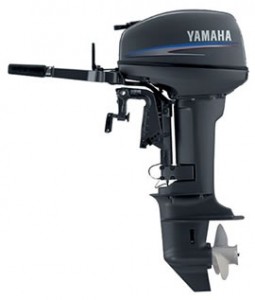 Since their introduction in the early 1900s, outboard motors have revolutionized the way in which we think about boating. Prior to that, boaters and fishermen were largely dependent on the direction of wind or – for those who felt like using oars – brute force. Outboards have taken the focus of our attentions of locomotion, allowing us to think about catching fish or just enjoy the scenery.
Since their introduction in the early 1900s, outboard motors have revolutionized the way in which we think about boating. Prior to that, boaters and fishermen were largely dependent on the direction of wind or – for those who felt like using oars – brute force. Outboards have taken the focus of our attentions of locomotion, allowing us to think about catching fish or just enjoy the scenery.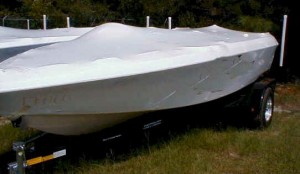 As much as we might hate to admit it, most anglers are faced with an offseason that lasts at least several months. When spring comes around, we can start our love affair with the fishing boat all over again. Until then, it’s up to us to winterize and find other ways to pass the time – such as snowmobiling. But before you hop on that sled, let’s take some time to ensure that you’ve done all you can to winterize the boat effectively.
As much as we might hate to admit it, most anglers are faced with an offseason that lasts at least several months. When spring comes around, we can start our love affair with the fishing boat all over again. Until then, it’s up to us to winterize and find other ways to pass the time – such as snowmobiling. But before you hop on that sled, let’s take some time to ensure that you’ve done all you can to winterize the boat effectively.